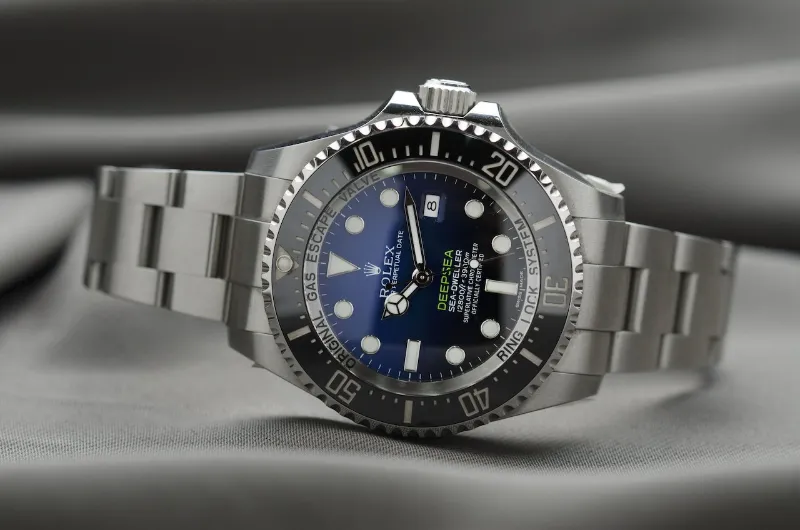Purchasing a luxury item, particularly something as iconic as a Rolex watch, is often seen as a reflection of one’s social status, achievement, or financial acumen. However, in an age where brand names and logos are frequently counterfeited and flaunted by the aspirational middle class and the uber-wealthy, the intrinsic value of owning a genuine luxury item comes into question. When examined critically, the decision to buy a Rolex presents a paradox: if one doesn’t have the means to buy it, its authenticity is doubted, and if one does have the means, its authenticity is presumed. Therefore, buying a Rolex may seem questionable from both angles.
The Rolex, an emblem of luxury and status, has become more than just a watch—it’s a statement. Yet, with the rise of counterfeits and societal perceptions regarding wealth and authenticity, buying a Rolex has become a layered decision riddled with assumptions and judgments. But can we break down this choice into the austere lens of smart or not?
Let’s look at two scenarios:
Imagine John, a young professional who’s saved up meticulously to buy his dream watch—a Rolex. To him, this isn’t just a purchase; it’s a culmination of his hard work and dreams. But as he walks into a room, instead of admiration, he’s met with doubtful glances. Thoughts bubble around the room: “Is that even real?” The challenge here isn’t John’s watch; it’s the baggage of perception that comes with it. In a society that often measures worth by the weight of one’s wallet, a genuine attempt to enjoy luxury can be overshadowed by the looming cloud of skepticism.
Conversely, think of Richard, a business magnate. His immense wealth is evident from his bank account and the life he leads—designer suits, luxury cars, and vacationing in exotic locales. Few would bat an eyelid if Richard sports a Rolex, and even fewer would doubt its authenticity. The twist? What if Richard’s Rolex isn’t genuine? Here, the societal blind spot becomes evident. Richard’s external manifestations of wealth act as a shield, guarding against any doubt, even if it’s misplaced.
Let’s first address the scenario of someone not possessing the substantial financial means to buy a Rolex yet opting to purchase one. The common logic suggests they might have stretched their budget, borrowed money, or prioritized the watch over other more pressing needs. In this case, the Rolex serves more as a symbol of aspirational wealth than an expression of actual financial stability. However, an inherent skepticism arises among observers, who might wonder how someone with a modest lifestyle or income could afford such a luxury. The sad irony is that even if this Rolex is genuine, it’s often dismissed as a counterfeit due to societal perceptions and biases around wealth and luxury. In an attempt to showcase status, the owner may face doubt and skepticism, undermining the purpose of their purchase.
On the flip side, consider the wealthy individual for whom buying a Rolex would not cause a significant dent in their finances. If this person wore a fake Rolex, most onlookers would assume it’s genuine purely based on their visible affluence and lifestyle. This assumption is rooted in the belief that the wealthy have no reason to wear counterfeits. Hence, the wealthy individual could enjoy the perceived status and prestige a Rolex offers without actually investing in the real deal. The irony in this scenario is stark: the watch’s authenticity is presumed not based on the watch itself but on the unrelated external trappings of the wearer’s life.
This analysis leads to some pressing questions: What, then, is the actual value of a Rolex or, for that matter, any luxury item? Is it the craftsmanship, the brand’s history, and the genuine materials used? Or is it simply the perception of the brand and the presumed status it confers upon its owner?
But here’s where the waters get murky: the actual value of a Rolex. Is it the intricate dance of gears and hands, meticulously crafted, representing a legacy of watchmaking? Or has it become merely about the logo and the societal badge it provides?
It would be unfair not to mention the Rolex aficionados—the ones who, with a gleam in their eye, will talk about the art and precision of their watch, where the brand’s value isn’t about flaunting but about admiration for craftsmanship. However, in a world increasingly veering towards the superficial, such pure intentions can sometimes get lost in the noise.
It is essential to acknowledge that many Rolex owners genuinely appreciate these watches’ artistry, history, and craftsmanship. Their decision to purchase isn’t purely rooted in showcasing status but stems from a deep appreciation for the product itself. However, the paradox highlighted here underscores a broader societal issue: the increasing emphasis on perception over substance.
Like many luxury purchases, the decision to buy a Rolex cannot be distilled into a simple binary of right or wrong, smart or dumb. However, the complexities and ironies surrounding its purchase highlight contemporary society’s evolving perceptions of wealth, authenticity, and value.
The Rolex debate isn’t just about a watch. It’s about societal perceptions, judgments, and the thin line between authenticity and pretense. Whether you’re a John or a Richard, the next time you see a Rolex glinting in the light, ask yourself: “What’s the story behind that watch?” Because, often, it’s more intricate and fascinating than the mechanics inside it.




